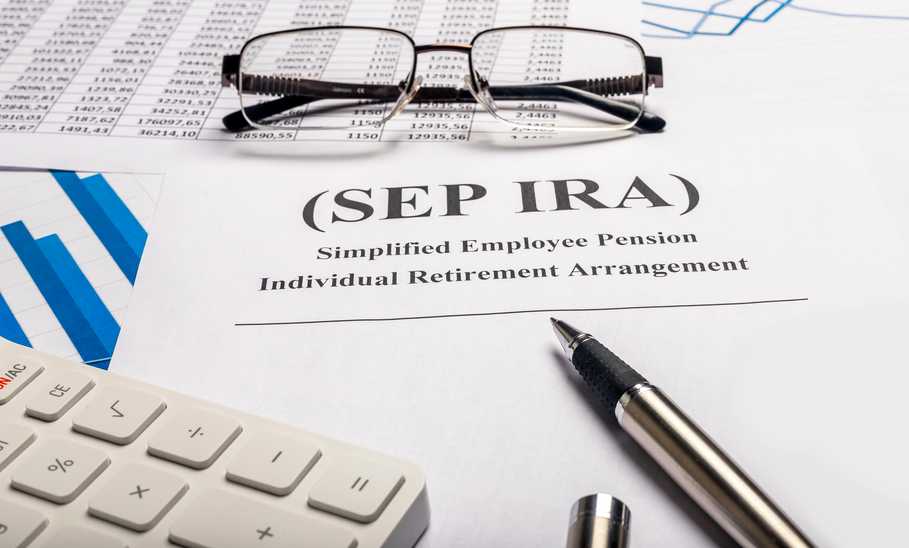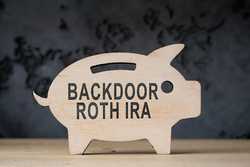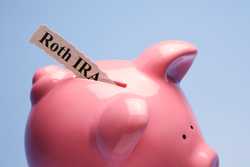A Simplified Employee Pension IRA (SEP-IRA) is a retirement plan designed for self-employed individuals or small business owners. It lets the employer make retirement contributions for their employees and themselves (as an employee).
With a SEP-IRA, employers can deduct all of their contributions from their taxable income, and the earnings grow tax-deferred until they are withdrawn. The plan is easy to set up and maintain, making it an attractive option for those who want a retirement plan with minimal administration.
How does a Simplified Employee Pension (SEP) work?
Simplified Employee Pension (SEP) and SEP-IRA are interchangeable for all practical purposes. That’s because SEPs are always set up in SEP-IRAs held by each participant (employee). As an employer, you make pre-tax contributions to a Simplified Employee Pension plan for each eligible employee. The SEP-IRAs are administered by a financial institution you choose. Each participant has full control over how the funds are invested in their account.
Important: With a SEP, you are both employer and employee. Employers do not have a SEP. Only employees do.
Employees invest the contributions you make for them based on offerings of the financial institution that administers your SEP-IRA plan. Typically, this includes a limited number of mutual funds, exchange traded funds (ETFs), and individual stocks and bonds. Each individual’s account grows tax-deferred. At age 59½ participants can start withdrawing funds, which requires paying taxes on the withdrawal. Early withdrawals are typically subject to penalties plus taxes.
SEP-IRA contribution limits
The contribution limits for a Simplified Employee Pension (SEP) IRA are subject to change each year based on the cost-of-living adjustment (COLA) determined by the Internal Revenue Service (IRS).
For 2024, contributions to an employee's SEP-IRA cannot exceed the lesser of:
- 25% of the employee's compensation, or
- $69,000
Note: Elective salary deferrals and catch-up contributions are not permitted in SEP plans.
Contributions to a SEP-IRA must be made by your tax-filing deadline, including extensions, for the year the contributions are being made.
SEP-IRA rules
The Simplified Employee Pension (SEP) IRA has several rules that employers and employees must follow, including:
- Eligibility: Employers must generally include in the plan all employees who are at least 21 years old, have worked for the employer for at least three of the past five years, and earned at least $750 in compensation during the year.
- Contribution limits: The employer can contribute up to 25% of the employee's compensation, up to a certain compensation limit each year. For 2024, the maximum contribution limit is $69,000, and the compensation limit is $345,000.
- Vesting: Employees are immediately vested in all contributions made to the SEP-IRA in their name, which means they have full ownership and control over the funds.
- Withdrawals: Withdrawals from a SEP-IRA are subject to the same rules and penalties as a traditional IRA. Generally, withdrawals made before age 59½ are subject to a 10% penalty in addition to income taxes.
- Required minimum distributions (RMDs): The employer is not required to make RMDs from the SEP-IRA plan, but employees must start taking RMDs from their SEP-IRA no later than April 1 of the year following the year in which they turn 72 (73 if they reach age 72 after Dec. 31, 2022).
SEP-IRA rules may vary depending on the specific plan and employer, so it's always a good idea to consult with a financial advisor or tax professional for guidance on how to follow the rules for your plan.
SEP-IRA: Pros and cons
A SEP-IRA has several advantages and disadvantages that employers and employees should consider when deciding whether it's the right retirement plan for their needs. If you are contemplating setting up a SEP-IRA, here are some advantages and disadvantages to keep in mind:
Pros:
- Flexible contributions
- Tax-deductible contributions (unless it’s a Roth)
- High contribution limits
- Easy to set up and maintain
Cons:
- No catch-up contributions
- Equal rate contributions required
- May have no Roth option
- Limited investment options
Advantages
- Flexible contributions: SEP-IRAs are particularly useful for companies or self-employed individuals whose income tends to be cyclical—for example, iinvolves good and bad years. With a SEP-IRA, employers can make larger contributions during good times and smaller ones when business is down. However, the employer’s contribution rate must be the same for all eligible employees.
- Tax-deductible contributions: Employers can make tax-deductible contributions to the SEP-IRA on behalf of eligible employees, reducing their taxable income.
- High contribution limits: For 2024, the contribution limit for a SEP-IRA is $69,000 or 25% of the employee's compensation, whichever is less, making it a great option for those who want to save a significant amount for retirement.
- Easy to set up and maintain: A SEP-IRA does not have complicated reporting requirements or annual filings, making it easy to set up and maintain.
Disadvantages
- No catch-up contributions: SEP-IRA contributions are typically limited to a percentage of employee compensation, without any additional catch-up contributions allowed for employees who are age 50 or older. However, if your plan allows you to make traditional IRA contributions to your SEP-IRA, you may be allowed to make tax-deductible catch-up contributions up to $7,000 ($8,000 if 50 or older) in 2024.
- Equal rate contributions required: Employers are required to contribute to eligible employees' SEP-IRA accounts each year if they contribute to their own SEP (as an employee). Further, they must contribute at the same rate for all employees.
- May have no Roth option: A SEP-IRA has not typically offered a Roth option, meaning all contributions and earnings are tax-deferred only until withdrawn. That’s because the Roth option—which allows for tax free-withdrawals—only became available for SIMPLE and SEP-IRAAs under the SECURE 2.0 Act, starting in 2023. Roth contributions will be included in the employee’s income for the year of the contribution.
Limited investment options: The employee may have limited investment options within the SEP-IRA, depending on the financial institution that holds the account.
How do I open a SEP-IRA?
Opening a Simplified Employee Pension (SEP) IRA is a simple process. Here's how to open a SEP-IRA as an employer or self-employed individual:
- Choose a financial institution: The first step is to choose a financial institution that offers SEP-IRA accounts. It can be a bank, brokerage firm, mutual fund company, or other financial institution. It's important to compare fees, investment options, and customer service before choosing a financial institution.
- Complete the application: Once you've chosen a financial institution, you'll need to complete an application to open a SEP-IRA account. This typically involves providing personal and business information, such as your name, address, Social Security number, and business tax identification number.
- Set up the plan: After completing the application, the financial institution will provide you with the documents to set up the SEP-IRA plan. This may include a plan document, adoption agreement, and other required forms.
- Determine employee eligibility: If you have employees, you’ll need to determine which of them can (and must) participate in the SEP-IRA plan based on certain criteria, such as age and length of service.
- Make contributions: Once you set up the plan and determine employee eligibility, you can contribute to eligible employees' SEP-IRA accounts. You can contribute up to 25% of the employee's compensation up to a certain limit each year.
How do I invest in my SEP-IRA?
Investing in a SEP-IRA is similar to investing in any other type of IRA. Here are some steps you, as an employee, can take:
Choose an investment strategy
The first step is to choose an investment strategy that aligns with your retirement goals and risk tolerance. You can choose from various investment options available through the financial institution that runs the plan, such as mutual funds, ETFs, stocks, bonds, or target-date funds.
Select investments
Once you've chosen an investment strategy, select the investments you want to hold in your SEP-IRA account. This may involve researching different mutual funds, ETFs, or individual stocks and bonds and considering factors such as investment performance, fees, and risk. Keep in the mind that your SEP plan will limit your investment options.
Monitor investments
Monitoring your SEP-IRA investments is important to ensure they align with your investment strategy and retirement goals. You should rebalance your portfolio periodically, selling underperforming investments or adding new ones.
If you're not comfortable managing your investments, you may want to consider working with a financial advisor or investment professional who can help you choose investments that align with your goals, manage your portfolio, and guide investment decisions.
How does a SEP-IRA compare to other retirement investing options?
Various retirement investing options have many similarities but also some notable differences. Here’s what you need to know.
SEP-IRA vs. Roth IRA
- Tax treatment: A SEP-IRA is a tax-deferred retirement account, meaning contributions are tax-deductible in the year they are made, and earnings grow tax-deferred until they are withdrawn. A Roth IRA is also tax-advantaged—earnings grow tax-free, but contributions are made with after-tax dollars, and you are not taxed on withdrawals. Under SECURE 2.0 and starting in 2023, SEP-IRAs can now have a Roth option. Its tax treatment will be similar to a Roth IRA.
- Contribution limits: SEP-IRA contribution limits are generally higher than those for a Roth IRA. For 2024, the contribution limit for a SEP-IRA is the lesser of 25% of an employee's compensation or $69,000. Roth IRA contribution limits for 2024 are $7,000 for anyone under 50. Those age 50 or older may contribute $8,000 to their Roth IRA.
- Eligibility: A SEP-IRA is generally available to self-employed individuals, small business owners, and employees. A Roth IRA is available to anyone who meets certain income requirements.
- Employer contributions: A SEP-IRA allows employers to make tax-deductible contributions to eligible employees. A Roth IRA does not allow employer contributions.
- Required minimum distributions (RMDs): A SEP-IRA requires account holders to start taking required minimum distributions (RMDs) at age 72 (73 if they reach age 72 after Dec. 31, 2022). Roth IRAs do not require RMDs during the lifetime of the original account holder.
SEP-IRA vs. SIMPLE IRA
- Contribution source: SEP-IRAs only allow employers to contribute. SIMPLE IRAs allow both the employer and the employee to contribute.
- Contribution limits: As of 2024, SEP-IRAs have a yearly contribution limit of 25% of each employee's salary or $69,000, whichever is lower. SIMPLE IRAs have an annual contribution limit of $16,000 per employee, plus $3,500 for those 50 and older.
- Matching contributions: SIMPLE IRAs require employers to match employee contributions up to 3% or contribute 2% if employees don't contribute. Since employees do not contribute to a SEP-IRA, this requirement does not exist with those plans.
- Penalties and restrictions: SEP-IRAs have a 10% penalty for funds withdrawn before age 59½. Distributions must start by age 72 (73 if they reach age 72 after Dec. 31, 2022). SIMPLE IRAs also have a 10% penalty for funds withdrawn before age 59½ and 25% if the account has been open for less than two years.
SEP-IRA vs. individual 401(k)
- Contribution limits: For a SEP-IRA, the maximum contribution limit is 25% of the employee’s income or $69,000 in 2024, whichever is less. For an Individual (Solo) 401(k), the maximum contribution limit is 23,000 in 2024 or \30,500 if you're 50 or older.
- Eligibility: SEP-IRAs are available to self-employed individuals and small business owners with any number of employees. Individual 401(k)s are only available to self-employed individuals or business owners with no employees other than a spouse.
- Contribution source: SEP-IRAs only allow for employer contributions. An individual 401(k) allows for both employee and employer contributions, which can benefit self-employed individuals with a side job as an employee.
- Investment options: A SEP-IRA typically offers a limited investment selection. An individual 401(k) usually has a wider range of mutual funds, ETFs, stocks, and bonds.
- Required contributions: An individual 401(k) requires the employer to make contributions based on a percentage of income, whereas SEP-IRAs do not. With an individual 401(k), the employer must contribute either a fixed percentage of their income or a fixed dollar amount, whichever is less.
SEP-IRA vs. traditional IRA vs. Roth IRA
- Eligibility: A SEP-IRA is for self-employed individuals or small business owners. Both traditional and Roth IRAs are available to anyone who earns income.
- Contribution source: An employer makes all contributions to a SEP-IRA. Employees make all contributions to a traditional or Roth IRA.
- Contribution limits: SEP-IRA rules allow an employer to contribute up to 25% of an employee’s income or $69,000 for 2024. The maximum contribution by an employee to their traditional or Roth IRA is $7,000 in 2024 or $8,000 if they are age 50 or older.
- Tax treatment: Contributions to a SEP-IRA and a traditional IRA are made pre-tax and grow tax-deferred until withdrawn at age 59½ and older. Taxes are paid on the amount withdrawn. Contributions to a Roth IRA are post-tax. They grow tax-free, and withdrawals (at age 59½ and older) are also not subject to tax.
TIME Stamp: A SEP-IRA offers an easy set-up and flexible contributions
A SEP-IRA lets those who are self-employed and small business owners participate in an easy-to-set-up and maintain retirement savings account. With a SEP-IRA, business owners and employees must carefully follow all IRS rules to avoid penalties and negative tax consequences.
This retirement account uniquely benefits those who wish to set aside a larger amount of income for retirement than a traditional or Roth IRA allows in a given year. Since employers do not have to contribute to their SEP plan every year, those with cyclical income need not fear being unable to fund the plan during hard times.
Frequently asked questions (FAQs)
Who can contribute to a SEP-IRA?
Employers can contribute to a Simplified Employee Pension (SEP) IRA on behalf of eligible employees, including themselves. The employer's contributions are tax-deductible, and the earnings grow tax-deferred until withdrawn.
How to calculate a SEP-IRA contribution
In 2024, the contribution limit for a SEP-IRA is up to 25% of the employee's compensation (limited to the first $345,000), or $69,000, whichever is less.
How to set up a SEP-IRA for the self-employed
Setting up a SEP-IRA for self-employed individuals is a straightforward process. You’ll need to take the same steps as outlined earlier—choose a financial institution, fill out an application, and set up the plan.
Once you set up your account, it’s time to contribute. Determine your contribution amount: For 2024, the contribution limit is 25% of your net self-employment income (up to $345,000) or $69,000, whichever is less. You have until the tax filing deadline, including extensions, to contribute for the previous tax year.
You have full control over how your SEP-IRA account funds are invested and, as mentioned above, you can choose from a variety of investments, depending on the offerings of the financial institution that administers your plan.




